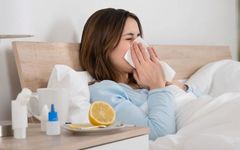Don’t forget to follow!
As autumn and winter transition, the temperature difference between morning and evening is significant, making it easy to catch a cold and develop a wind-cold common cold.
If you have the following symptoms, you are likely suffering from a wind-cold common cold: extreme sensitivity to cold, accompanied by slight fever, no sweating, headache, body aches, nasal congestion with a heavy voice, sometimes accompanied by clear nasal discharge, itchy throat, cough, thin white phlegm, no thirst or feeling more comfortable drinking warm water, and a thin white and moist tongue coating.
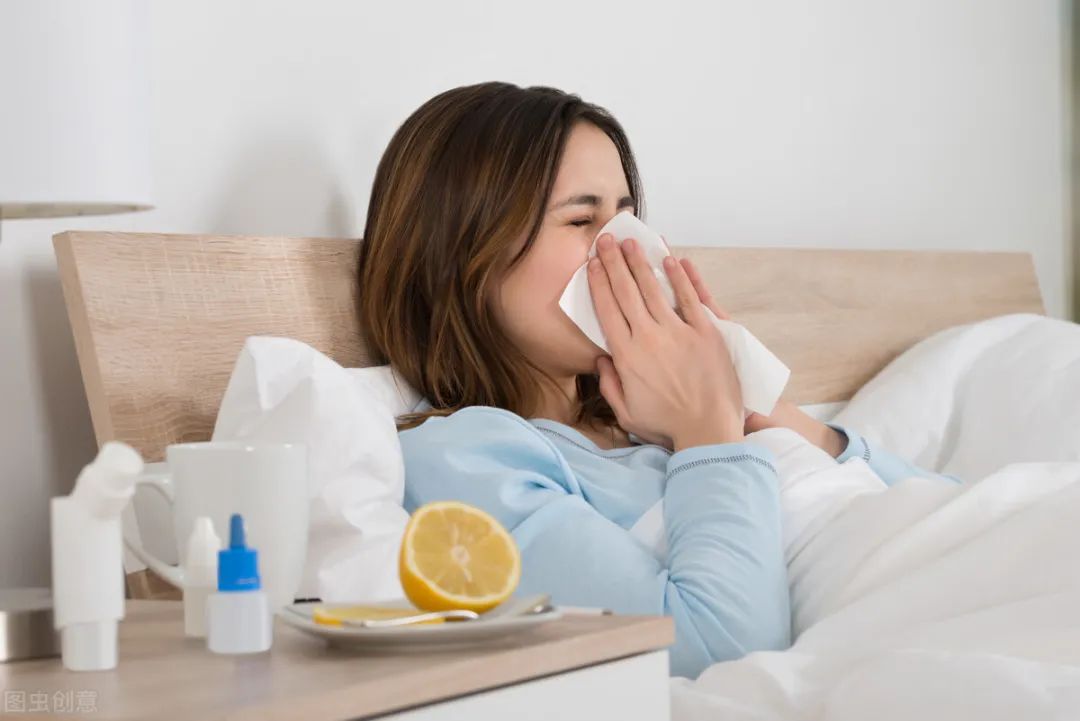
In Traditional Chinese Medicine (TCM), the treatment for wind-cold common cold employs the method of “dispersing wind-cold and warming the exterior.” The commonly seen TCM medicines in pharmacies mainly include 7 types: Wind-Cold Common Cold Granules, Cold Relief Granules, Detoxifying Cold Granules, Zheng Chai Hu Decoction Granules, Cold Soft Capsules, Jing Fang Granules, and Cold Relief Syrup.
1. Wind-Cold Common Cold Granules
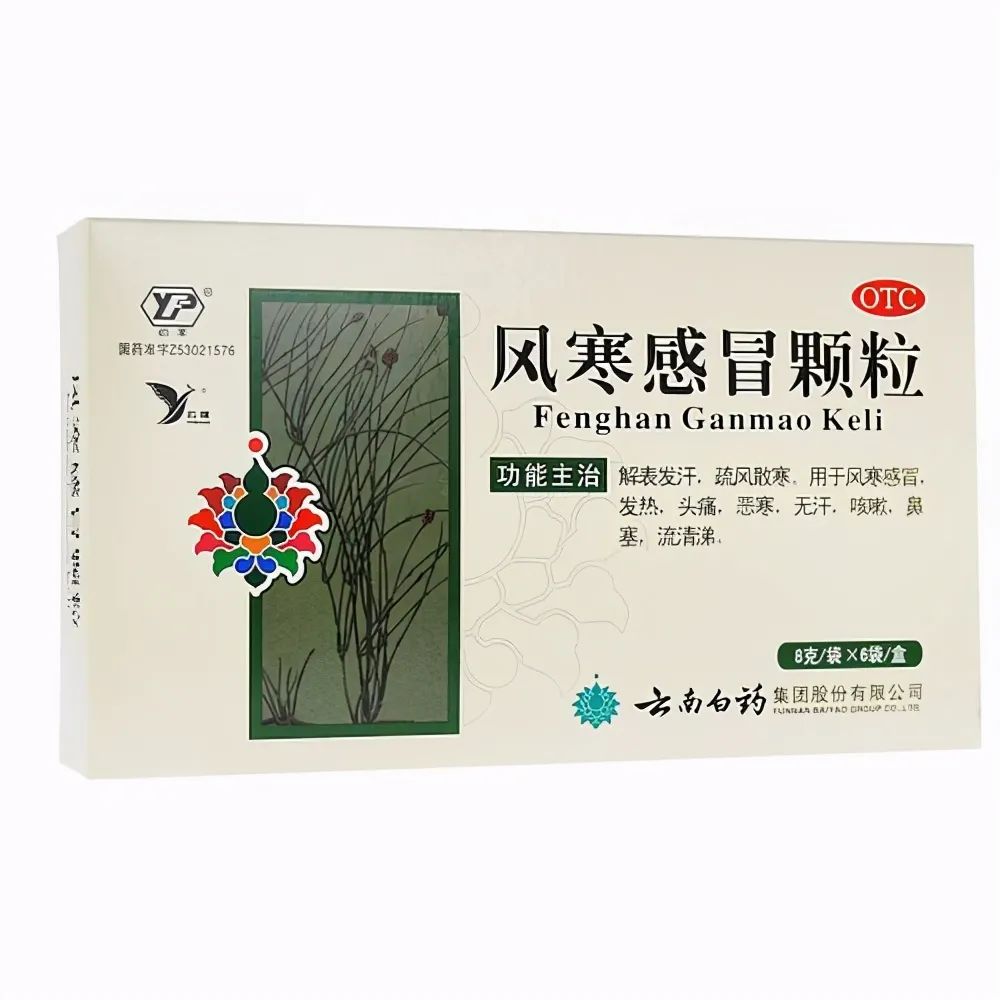
Mainly contains Ma Huang (Ephedra), Ge Gen (Kudzu Root), Zi Su Ye (Perilla Leaf), Fang Feng (Siler), Gui Zhi (Cinnamon Twig), Bai Zhi (Angelica Dahurica), Chen Pi (Aged Tangerine Peel), Ku Xing Ren (Bitter Apricot Seed), Jie Geng (Platycodon Root), Gan Cao (Licorice), and Gan Jiang (Dried Ginger). It has the effect of releasing the exterior and inducing sweating, dispersing wind and cold. It is mainly used for patients with wind-cold common cold, fever, headache, chills, no sweating, cough, nasal congestion, and clear nasal discharge.
2. Cold Relief Granules
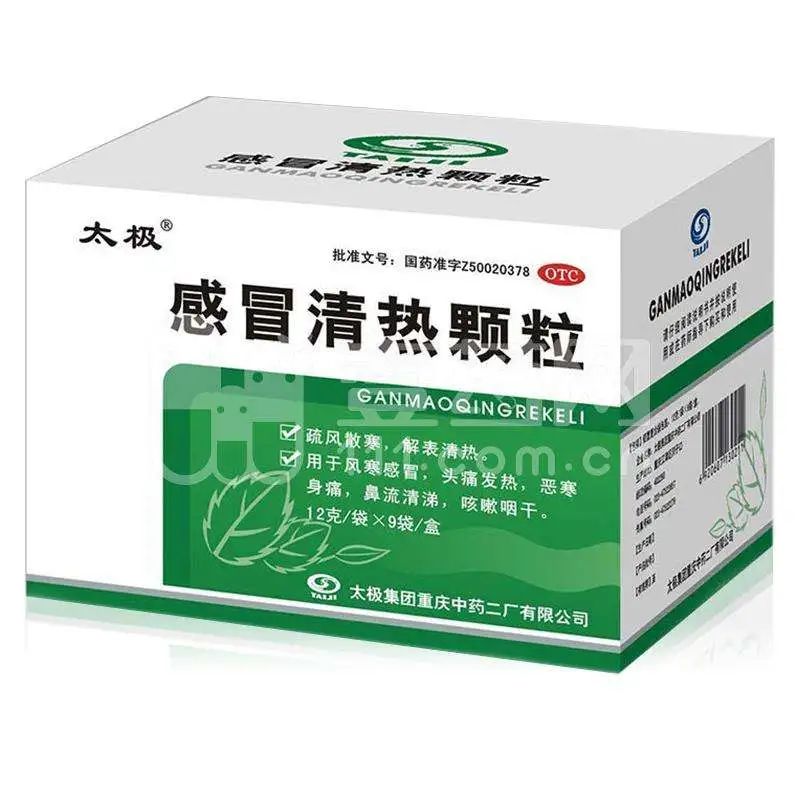
Mainly contains Jing Jie Sui (Schizonepeta), Bo He (Mint), Fang Feng (Siler), Chai Hu (Bupleurum), Zi Su Ye (Perilla Leaf), Ge Gen (Kudzu Root), Jie Geng (Platycodon Root), Ku Xing Ren (Bitter Apricot Seed), Bai Zhi (Angelica Dahurica), Ku Di Ding (Bitter Herb), and Lu Gen (Reed Rhizome). The formula includes Jing Jie Sui which is aromatic and disperses wind, making it the monarch herb; Fang Feng and Zi Su Ye disperse wind and cold, Bo He and Chai Hu disperse wind and clear heat, Ge Gen releases muscle and reduces fever, and moistens dryness; they are the minister herbs; Jie Geng and Ku Xing Ren regulate lung qi, transform phlegm, and stop cough; Bai Zhi releases the exterior and disperses wind, opens the orifices and relieves pain; Ku Di Ding clears heat and detoxifies; Lu Gen clears heat and generates fluids, alleviating thirst; they are the assistant herbs. The combination of these herbs has the effect of dispersing wind, clearing heat, and releasing the exterior. It is mainly used for patients with wind-cold common cold, headache, fever, chills, body aches, nasal discharge, cough, and dry throat.
3. Detoxifying Cold Granules
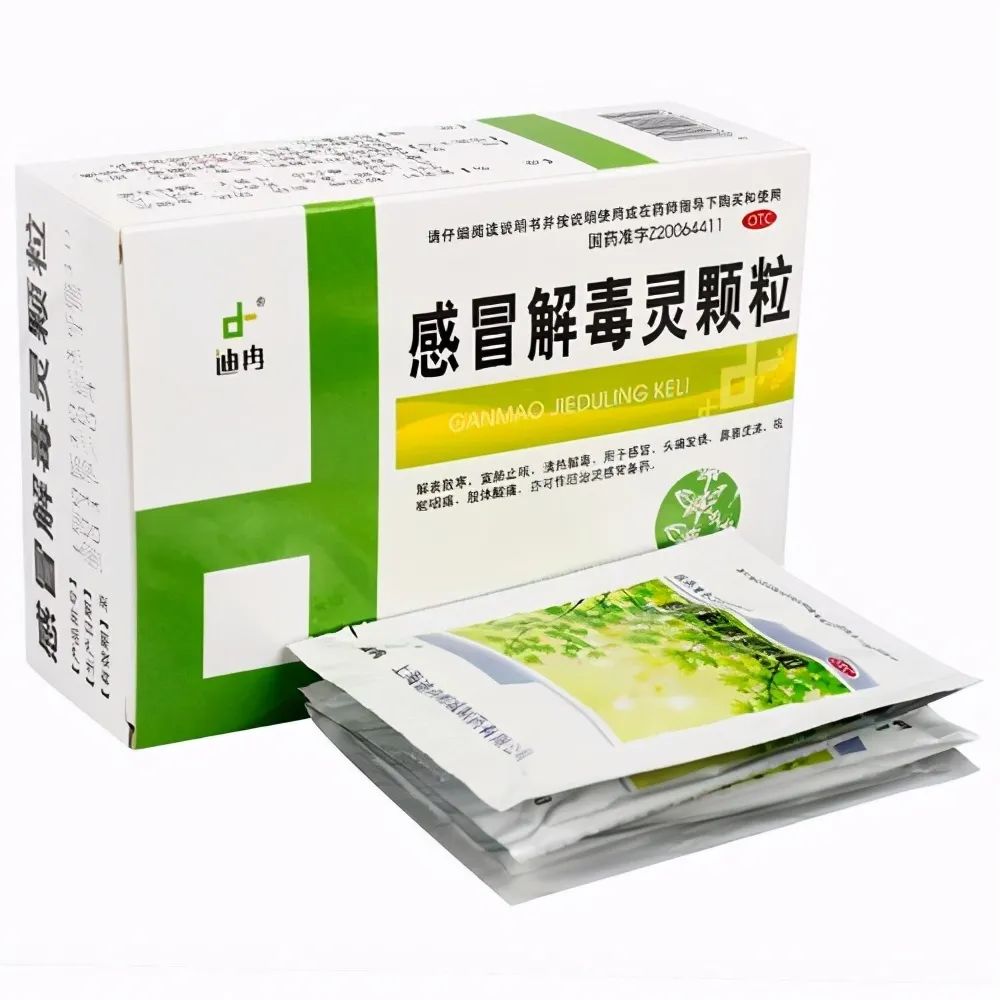
Mainly contains Zi Su Zi (Perilla Seed), Qian Hu (Hogfennel), Fang Feng (Siler), Jin Yin Hua (Honeysuckle Flower), Lian Qiao (Forsythia), Mai Dong (Ophiopogon), Ban Lan Gen (Isatis Root), Ku Xing Ren (Bitter Apricot Seed), Qiang Huo (Notopterygium), Chuan Xiong (Szechuan Lovage), Niubang Zi (Burdock Seed), Chen Pi (Aged Tangerine Peel), and Sang Bai Pi (Mulberry Root Bark). It has the effect of releasing the exterior, dispersing cold, promoting lung function, stopping cough, and clearing heat and detoxifying. It is mainly used for patients with cold, headache, fever, nasal congestion, runny nose, cough, and sore throat, and body aches.
4. Zheng Chai Hu Decoction Granules
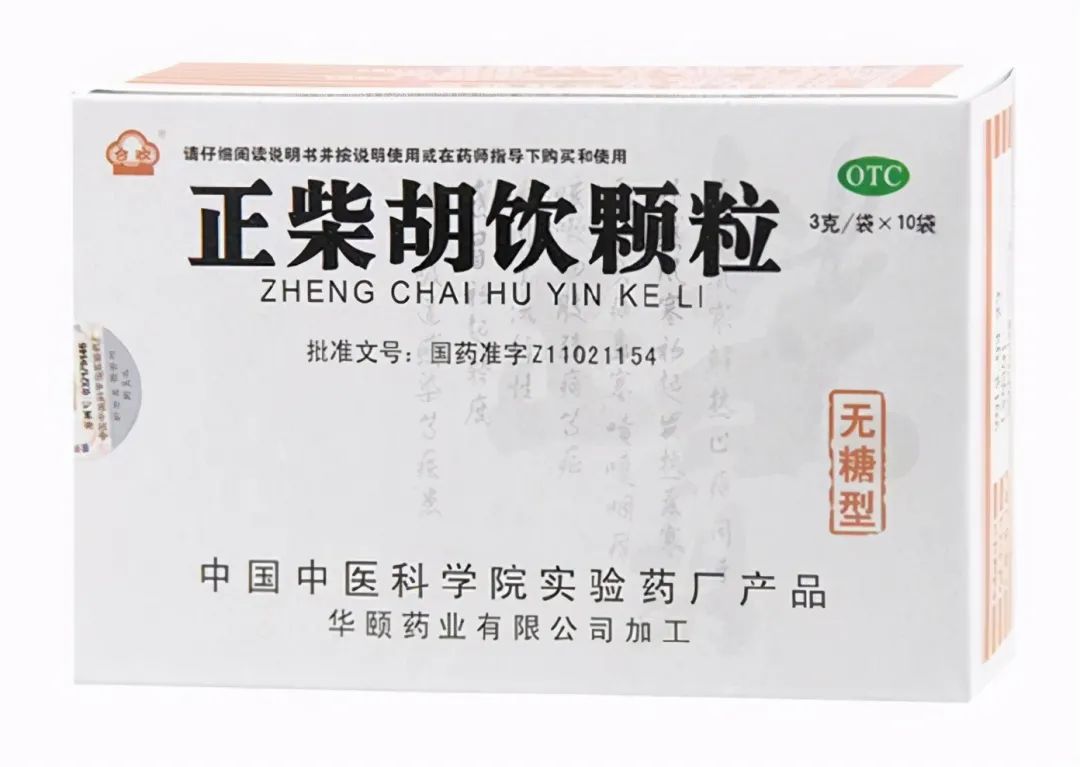
Mainly contains Chai Hu (Bupleurum), Chen Pi (Aged Tangerine Peel), Fang Feng (Siler), Chi Shao (Red Peony Root), Gan Cao (Licorice), and Sheng Jiang (Fresh Ginger). In this formula, Chai Hu disperses and reduces fever, serving as the monarch herb. Fang Feng releases the exterior and disperses wind, relieving dampness and pain; Sheng Jiang induces sweating and releases the exterior, warming the lungs and stopping cough, serving as minister herbs. Chi Shao clears heat and cools the blood; Chen Pi regulates qi and strengthens the spleen, serving as assistant herbs. Gan Cao harmonizes the herbs, serving as the envoy herb. The entire formula has the effect of dispersing wind-cold, relieving heat, and alleviating pain. It is mainly used for patients with initial onset of wind-cold: fever, chills, no sweating, headache, nasal congestion, sneezing, itchy throat, cough, and body aches; also for initial flu and mild upper respiratory infections with the above symptoms.
5. Cold Soft Capsules
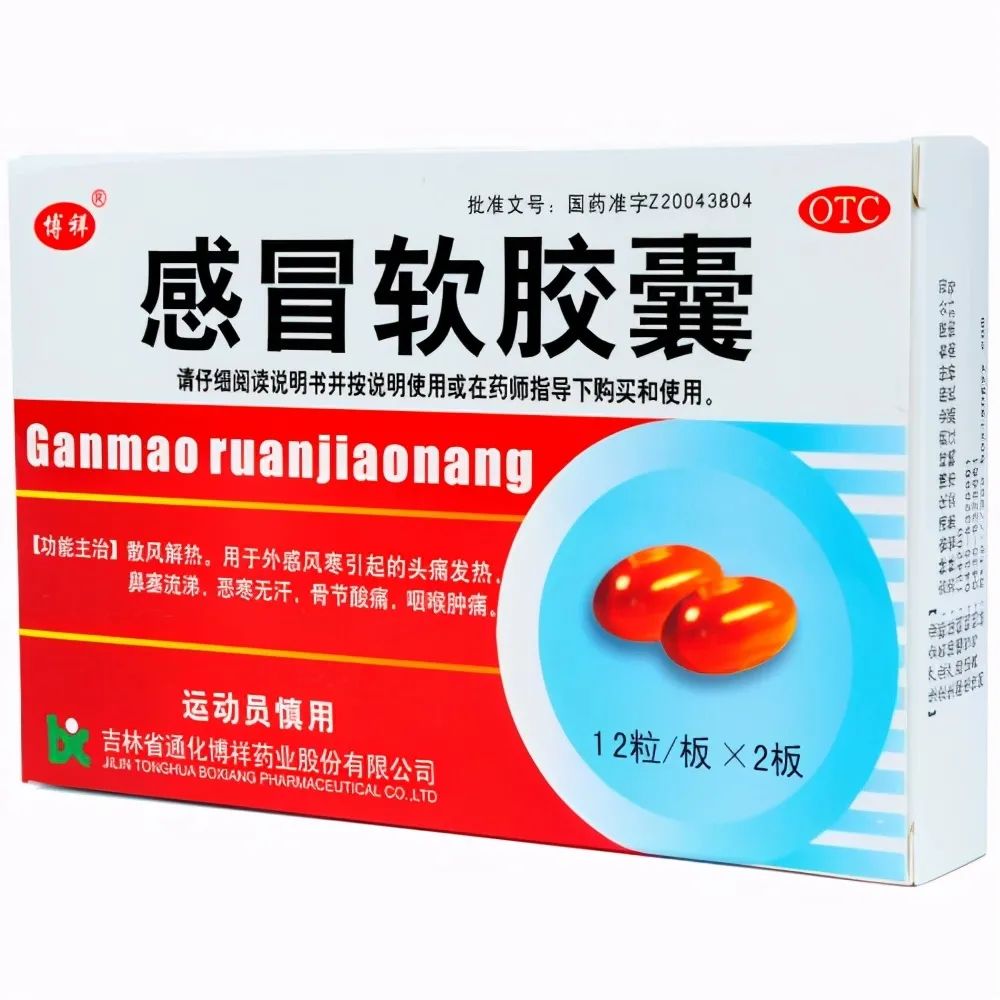
Mainly contains Qiang Huo (Notopterygium), Ma Huang (Ephedra), Gui Zhi (Cinnamon Twig), Jing Jie Sui (Schizonepeta), Fang Feng (Siler), Bai Zhi (Angelica Dahurica), Chuan Xiong (Szechuan Lovage), Shi Chang Pu (Acorus), Ge Gen (Kudzu Root), Bo He (Mint), Ku Xing Ren (Bitter Apricot Seed), Dang Gui (Angelica Sinensis), Huang Qin (Scutellaria), and Jie Geng (Platycodon Root). It has the effect of dispersing wind and relieving heat. It is mainly used for patients with headache and fever caused by wind-cold, nasal congestion, runny nose, chills without sweating, body aches, and sore throat.
6. Jing Fang Granules
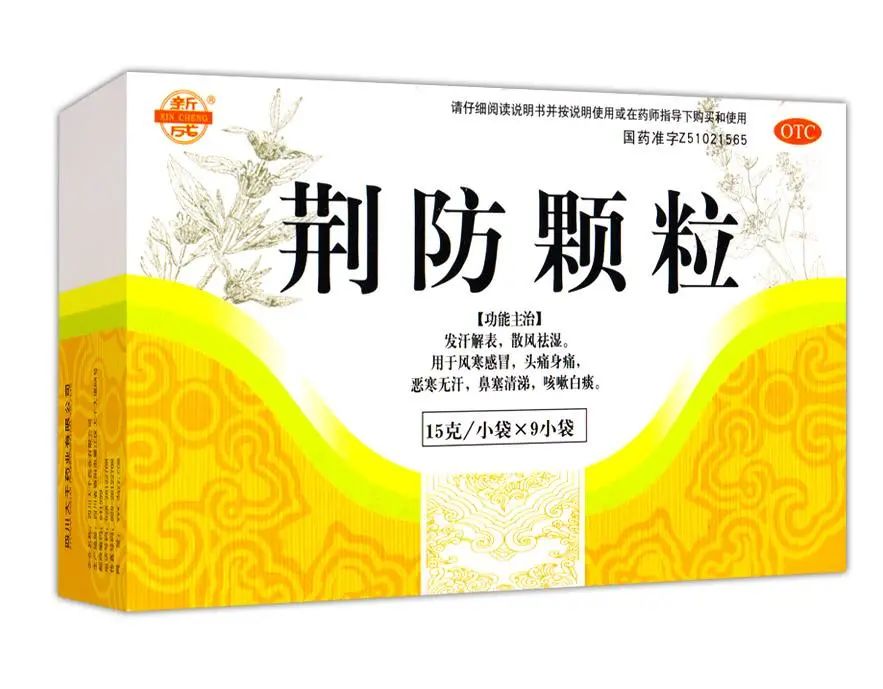
Mainly contains Jing Jie (Schizonepeta), Fang Feng (Siler), Qiang Huo (Notopterygium), Du Huo (Angelica Pubescens), Chai Hu (Bupleurum), Qian Hu (Hogfennel), Chuan Xiong (Szechuan Lovage), Zhi Ke (Bitter Orange), Fu Ling (Poria), Jie Geng (Platycodon Root), and Gan Cao (Licorice). It has the effect of inducing sweating and releasing the exterior, dispersing wind and eliminating dampness. It is mainly used for patients with wind-cold common cold, headache, body aches, chills without sweating, nasal congestion with clear discharge, and cough with white phlegm.
7. Cold Relief Syrup
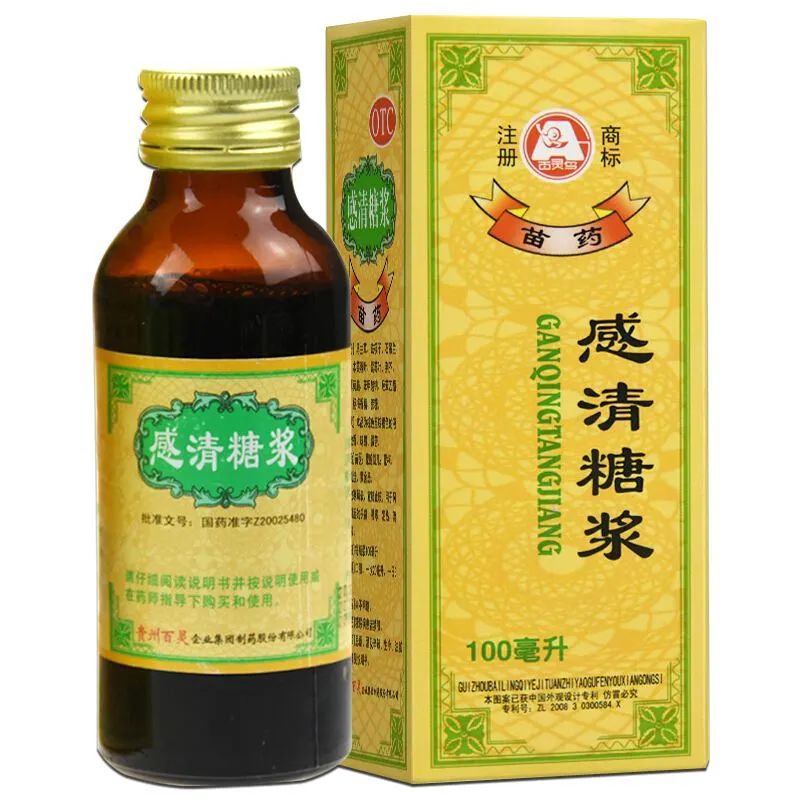
Mainly contains Ma Lan Cao (Plantago), Tie Kuai Zi (Ironwood), Shi Diao Lan (Stone Hanging Orchid), Lan Bu Zheng (Blue Cloth), Mu Fu Rong Ye (Mallow Leaf), Zi Su (Perilla), Jing Jie (Schizonepeta), Bo He Nao (Menthol), Benzoic Acid Sodium, Hydroxybenzoate Ethyl, Citric Acid, Yang Mei Fragrance, and Sucrose. It has the effect of dispersing cold, releasing the exterior, promoting lung function, and stopping cough. It is mainly used for patients with headache, chills, fever, runny nose, and cough caused by wind-cold common cold.
If you find this useful, 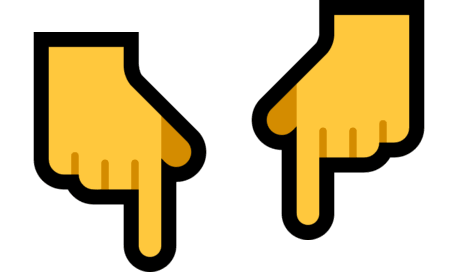 remember tofollow!Note: Some text and image resources in this article are sourced from the internet. The purpose of reprinting this article is to convey more information. If there are any errors in source attribution or infringement of your legal rights, please notify us immediately, and we will delete it promptly and apologize.Editor’s recommended articles for friends:
remember tofollow!Note: Some text and image resources in this article are sourced from the internet. The purpose of reprinting this article is to convey more information. If there are any errors in source attribution or infringement of your legal rights, please notify us immediately, and we will delete it promptly and apologize.Editor’s recommended articles for friends:
1. So precious! Over 800 folk remedies, there is no illness that cannot be treated, save for future use!
2. 70 of the most practical health-preserving dietary remedies revealed, too good and too precious, save them for later!
3. 12800 commonly used Chinese herbs are here, with all their properties and effects, save them for future use!
4. 10 early symptoms of COVID-19!
5. A single antiviral Chinese herb: the magical effects and functions of Jin Yin Hua (Honeysuckle).
Like is a form of encouragement Share to spread joyAfter reading, please click“Looking”

